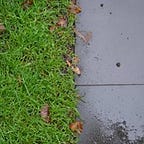Loving nature… while living in the city?
While browsing Wikipedia for different architectural styles, I ended on a page about biophilic design.
Biophilia is the hypothesis which states that seeking connections with nature is an innate human behaviour. Biophilic design -which is meant for interior design, architectures and urban planning- supposedly fulfils such desire.
Intrigued, I googled to learn more about it and I stumbled upon an article called 14 Patterns of Biophilic Design. I love how detailed it is.
I am not going to detail those fourteen patterns. But, I can say they fall into these three categories: nature in the space, nature analogues and nature of the space.
God, I hope I understand the article perfectly.
Nature in the space category features elements which directly remind us of nature. They can be actual elements of nature like the presence of plants and animals or the sight of natural landscapes. But, strangely, they can also be paintings and videos of natural sceneries, water features and even mechanically-released plant oils!
Natural Analogues category, as the name suggests, features elements which somewhat replace nature in its place. They can be materials that aren’t (or don’t feel) synthetic; they can be Biomorphs AKA shapes which resemble living beings, e.g., a coffee table that looks like a four-legged animal; they can also be patterns which remind us of the complexity of life, e.g., designs on wallpapers and carpets and even the sight of exposed machinery.
Nature of the Space category features elements which causes us to be more mindful about the spaces we are entering. They can be ones which evoke carefreeness and control at the same time, e.g., open floor plans and transparent materials; they can be elements which make privacy possible wherever and whenever, e.g., gazebos and canopy trees; they can evoke ‘mystery’, consequentially enticing our sense of curiosity, e.g., winding paths and peek-a-boo windows; they can also remind us about the risks of life, e.g., life-sized photography of spiders and snakes.
I actually find the recommendations weird.
Calling for using literal elements of nature makes sense. But, somehow, it also calls for elements which thematically remind us of nature. Essentially, the authors assert that our subconscious can discern mother nature’s patterns even among the synthetic.
I am torn about this. While human intuition is indeed wonderful, I am also sceptical about the claim. It sounds too good to be true.
Oh and the supposed health benefits…
The article does cite research papers to back its claims. But, I don’t know whether the content is misrepresented or not. If it properly represents the content, I don’t know if the researches are duplicable or not. Just because something sounds intuitive, that does not mean it is scientifically sound.
Not to mention that the article was published by a consulting firm specialising in sustainable development. Of course, they would publish such work.
But, regardless of my scepticism, biophilic design still fascinates me.
I love it when people perceive dwelling simply as something which can enhance our souls, instead of simply something to live in, to swank about or to fawn over the aesthetics. Speaking for myself, my dwellings do affect my life beyond the practicality, social status and aesthetics.
Incoming tangent:
When talking about architectures, I hate International Style because it insinuates that functionality can only be achieved by sacrificing beauty. It is so fucking international, it refuses to blend in with the local surroundings wherever it goes.
I hate most Brutalist buildings because they are oppressive towards their surroundings; their oppressive feel can be beautiful….. in dystopian fictions. The works of Tadao Ando and Studio Granda are the exceptions, as they actually blend in with their surroundings; critical regionalism ftw!
I also hate many postmodern buildings because they try so hard to be anti-International Style, they end up as soulless as their enemies; they appear decorative or modern just for the sake of being so. If anything, they can also be a bunch of eyesores.
I love traditional architectural styles. But, I hate it when people build new buildings in those styles just for the sake of being traditional, disregarding the possible impracticality. The money and energy could have been used to preserve and even repurpose the already-existing ones.
Regarding urban planning, I despise automobile-oriented developments. They cause more air pollution, they discourage walking habits and they make it harder for residents to save money because, you know, owning a car is fucking expensive. Not to mention that walking encourages me to be more attentive of my neighbourhood and its surrounding areas.
Oh, and I don’t need to explain why the lack of greenery is a problem.
Green wall and roof are indeed expensive to construct and maintain. But, at least, cities could have had more trees, public parks and rooftop gardens than they do now.
Biomorphic architectures may be expensive to build and may be even prone to become eyesores. But, we could have resorted to Critical Regionalism instead. While it thrives to be modern and functional, it also wants to blend in with the natural and/or cultural surroundings.
It is indeed difficult to make already-existing areas to be less car-dependent. But, at least, we could have eliminated car dependency when creating new developments!
To shorten my unnecessarily long tangent, I hate how urban developments are full of missed opportunities (just like anything in life, one may argue).
Even if a full-blown biophilic approach is too unattainable, the least we can do is to be more considerate with how we design living spaces, to think how they can benefit us in the long run.
.
.
.
.
.
Donate to this deadbeat, preachy blogger on Patreon.
